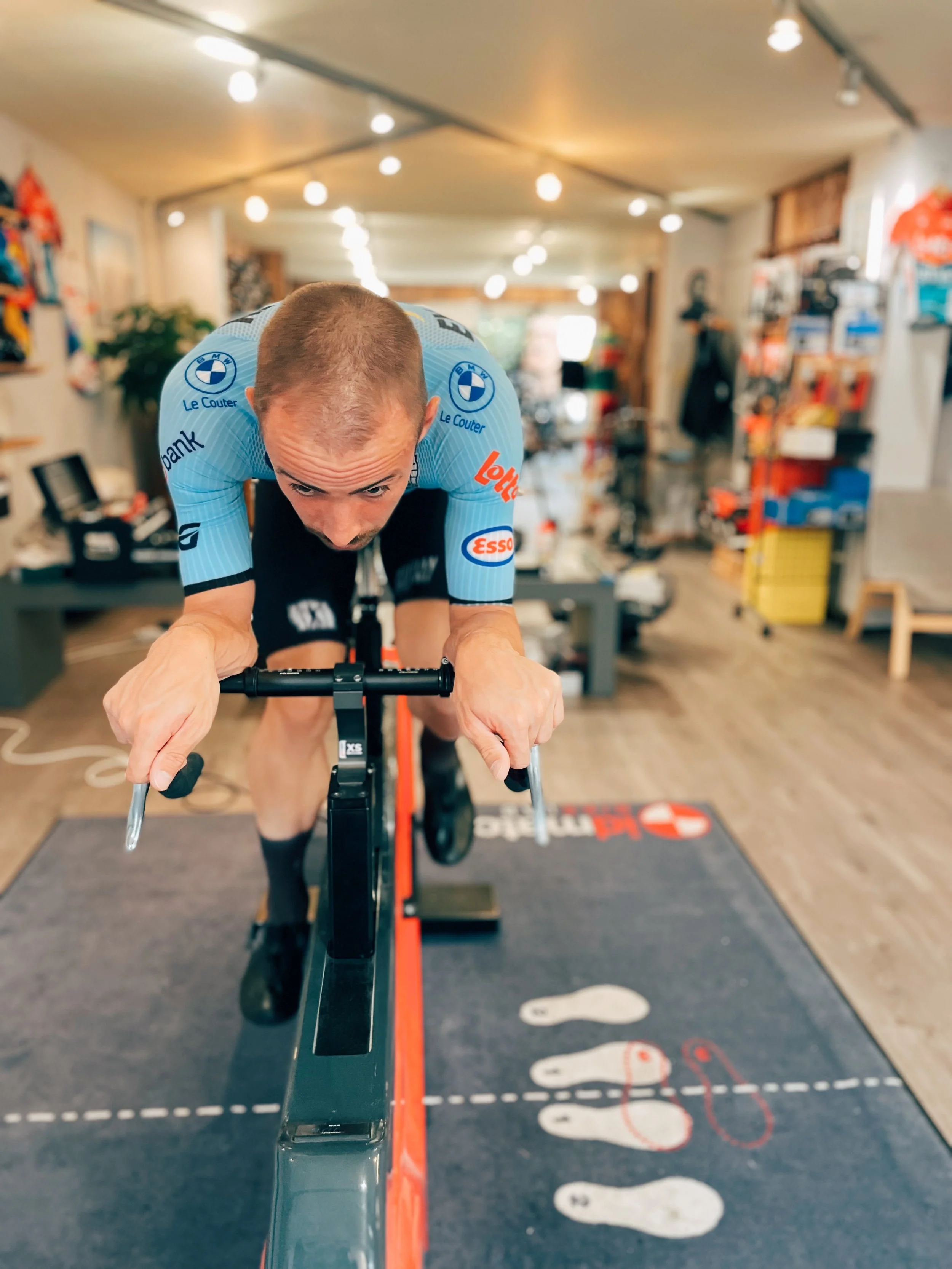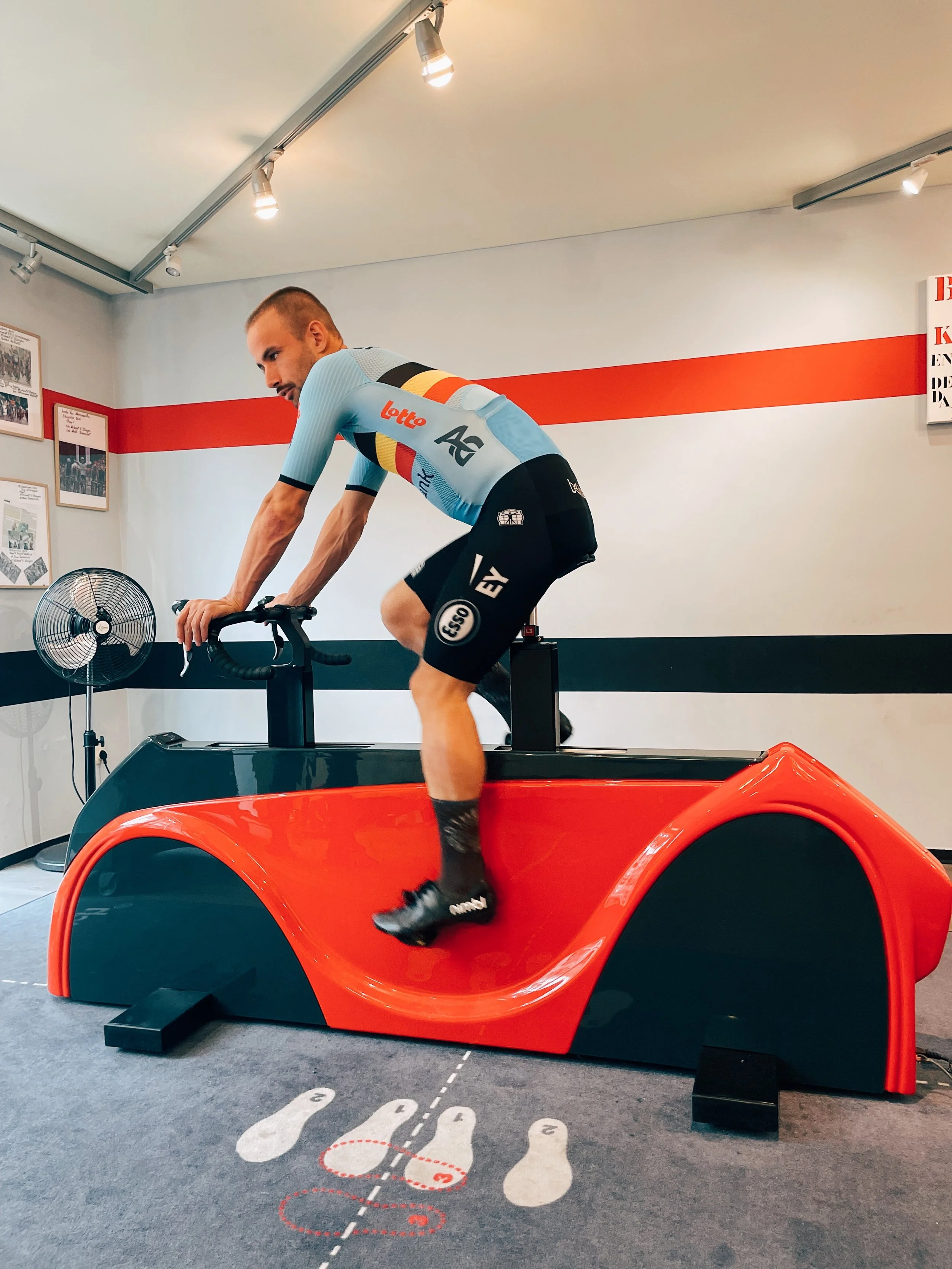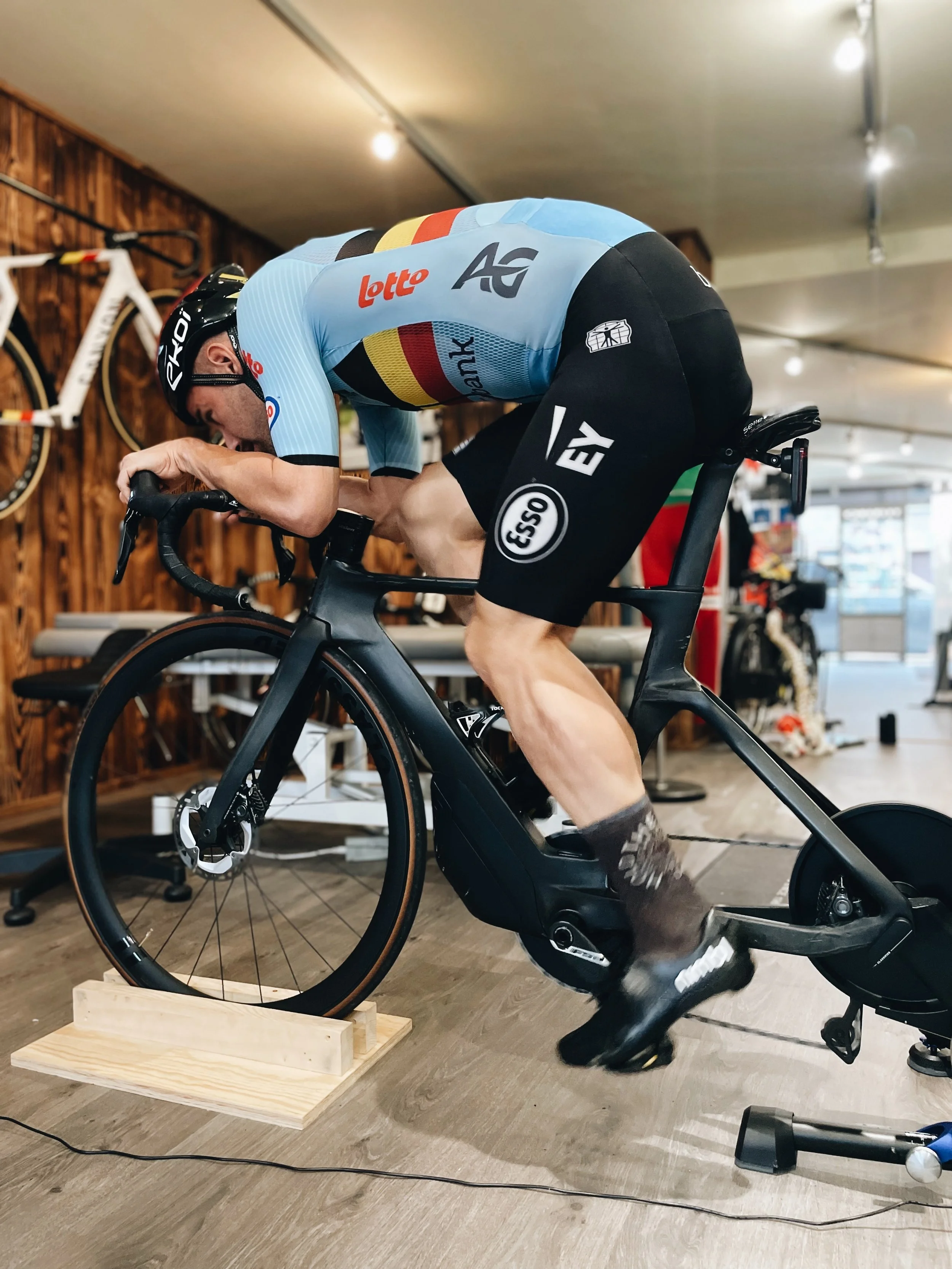Optimizing Victor Campenaerts’ Aerodynamic Position: A Deep Dive into Performance at the Highest Level
When you’re working with a rider like Victor Campenaerts, it’s all about marginal gains and squeezing every ounce of performance out of the body and the bike. Victor, known as one of the most meticulous athletes in the peloton, consulted with us in preparation for the World Championships in Zurich and in light of his upcoming transition to Visma Lease a Bike next year. His goals were clear: to optimize his aerodynamic position without sacrificing power or comfort.
At our bikefitting lab, we took a deep, technical dive into Victor’s posture, focusing on three key parameters that are crucial for time trial performance: aerodynamics, power output, and comfort. These factors often stand in tension with one another, so finding the perfect balance is both a science and an art. Here's how we broke it down:
Depth Camera for Aero Positioning: Testing the Limits of Aerodynamics
Aerodynamics are critical for any time trial specialist, and Victor’s quest for the perfect aero position led us to use a depth camera to map out the precise contours of his body while in a time trial stance. The depth camera provides a 3D model of the rider, allowing us to measure his frontal area and determine how his position could be adjusted to reduce drag. We made the system our own in collab. with FAAST and the University of Antwerp. It’s the first, let’s say, virtual wind tunnel in the world.
By overlaying his frontal profile with data on drag coefficients, we could identify where his positioning could be fine-tuned for maximum aero gains. Victor, being a goeroe in this area, was highly attuned to how even minor adjustments in tuck position, elbow placement, and head posture could lead to significant aerodynamic improvements.
The data revealed that a more aggressive drop in his torso angle and a smaller shoulder position, combined with a slight tweak in elbow width, allowed for optimal airflow while still enabling him to maintain power output.
Balancing Aero, Power, and Comfort: The Three Pillars of Performance
The core challenge of working with a rider like Campenaerts is to balance aerodynamics, power output, and comfort. These factors are interdependent—pushing too hard in one area can negatively affect the others.
Aerodynamics: In pursuit of the best possible aero gains, we ensured that Victor’s position minimized drag, especially in time trial setups where every watt saved counts.
Power Output: We carefully tracked his power metrics to ensure that the changes to his aero position didn’t compromise his ability to generate maximal power. By using power meters during fitting, we could instantly detect any loss in efficiency due to position changes and tweak accordingly.
Comfort: Finally, comfort is crucial, especially for long races. Without a sustainable position, even the best aero posture can cause fatigue or injury. Victor’s prior positions had sometimes led to discomfort in the lower back, so we focused heavily on ensuring his revised position supported his anatomy and reduced the risk of overloading specific muscle groups.
Thermal Imaging: Identifying Hotspots and Muscle Imbalances
Next, we turned to thermal imaging technology. This step was critical in identifying any asymmetrical heat patterns or potential hotspots that could signal muscle imbalances or areas of excess friction.
Thermal imaging is especially useful in pinpointing areas where the rider may be unknowingly compensating for discomfort or misalignment. We use these expensive camera’s as the first bike fitter in the world. In Victor’s case, we identified slight temperature increases in the hip and lower back region, which indicated that there might be a subtle imbalance in how he was loading his left versus right side. We ensured that his power output remained as symmetrical as possible, reducing the risk of fatigue over long distances.
Insights Gained for Zurich and Beyond
By aligning these three performance pillars, we were able to provide Victor with key insights into how he could adjust his riding posture for maximum performance leading up to the World Championships with, among them, Remco Evenepoel. Our analysis helped him fine-tune his riding position in a way that reduced drag while maintaining his power output and ensuring he could hold that position for long durations without discomfort.
This in-depth fitting session provided Victor with the tools and data he needs to dominate the time trials, and as he transitions to Visma Lease a Bike next season, we’re confident he’s in a position to maximize his strengths.
Victor’s commitment to excellence pushes us to refine our own processes, and we’re proud to have contributed to his ongoing journey to achieve even greater results on the world stage.
Conclusion
Working with a cyclist of Victor Campenaerts’ caliber requires attention to every minute detail, and we’re thrilled to have played a role in optimizing his performance. By using cutting-edge technology like high-speed cameras, thermal imaging, and depth camera aero testing, we helped Victor fine-tune his position for maximum aerodynamic efficiency, power, and comfort.
Stay tuned to see how Victor he moves forward with Visma Lease a Bike next season!




